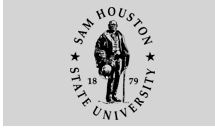Hamster Study Leads to 'Condoms Cause Cancer' Rumors
 |
| Kelly Jakubowski is a senior journalism major from Conroe.
The opinions in this column are hers. |
Rumor of the week: condoms cause cancer.
This one could
be dangerous, because it has right-wing abstinence preachers
screaming that condoms do more harm than good.
I'm not saying
that the hippie free love principle is the way to go, merely
that good information is owed to the public, and while protected
sex is only "safER sex," good information often leads
to better choices.
For more information,
I contacted the Centers for Disease Control, the World Health
Organization, the National Institute of Health, the National
Cancer Institute and the Food and Drug Administration.
Most of them
hadn't even heard of the study, which is a shame, because it's
frequently cited on abstinence-only Web sites.
The Centers for Disease Control directed me to PubMed, a service
of the National Library of Medicine and National Institute of
Health. It lists the abstract of most published experiments.
The 2005 German
study found carcinogens--cancer-causing agents--in condoms. They
are called nitrosamines, and they are also found in balloons
and baby pacifiers.
Different Web sites claim that nitrosamines are either allowed
in controlled amounts in certain products or not regulated at
all, depending on the country.
The American Council on Science and Health, in an article about
cigarette smoke, claims that nitrosamines are regulated
in the U.S. Products like beer, bacon and baby bottle nipples
must stay under 10 parts per billion.
To find the amount in condoms, researchers immersed different
products in artificial sweat and artificial saliva to bring the
nitrosamines out of the products, and then measured the results.
PubMed posted
information taken directly from the study. It said researchers
assumed a human might be exposed to condom contact 1,500 times
in a lifetime- 50 times a year for 30 years- and came up with
.9 micrograms of nitrosamines per lifetime as a reasonable number.
They then applied one gram of the substance to some poor hamsters,
who didn't even get their condom exposure the old-fashioned way.
The hamsters developed tumors, particularly of the liver.
However, according to PubMed, " this dose exceeds the dose
to be expected from contact with condoms by more than one million.
Also, epidemiological studies do not support a role for condoms
in the induction of cancer. The incidence of cervical cancer
and liver tumors is high in developing countries, where condoms
are seldom used. In addition, humans are regularly exposed to
nitrosamines from food and tobacco smoke at a dose which is 1,000
to 10,000 fold higher than expected from condom use. In summary,
the risk for the induction of tumors from nitrosamines in condoms
is very low."
Part 2 of this report will deal with condoms at SHSU.
—END—
SHSU Media Contact: Kelly Jakubowski
March 22, 2006
Please send comments, corrections, news tips to Today@Sam.edu.
|


